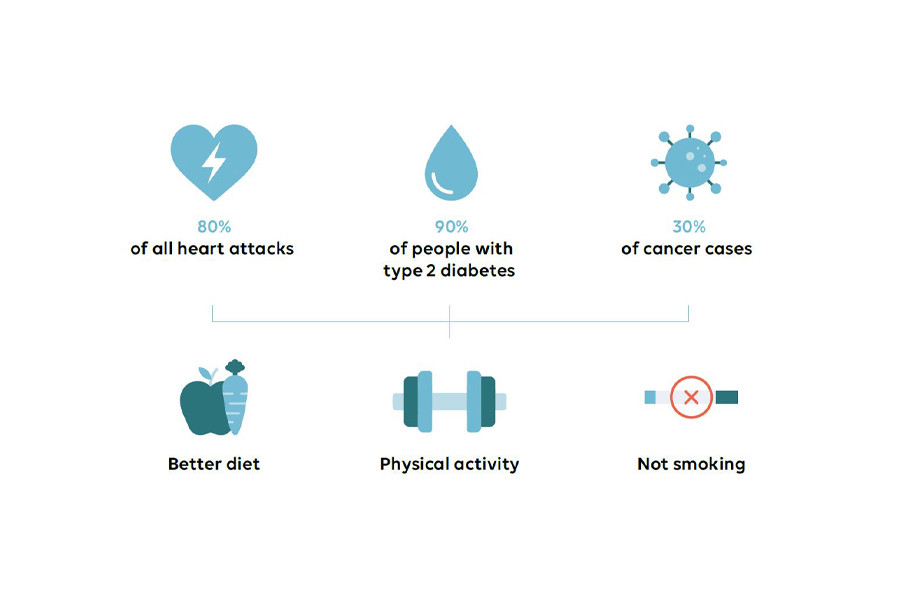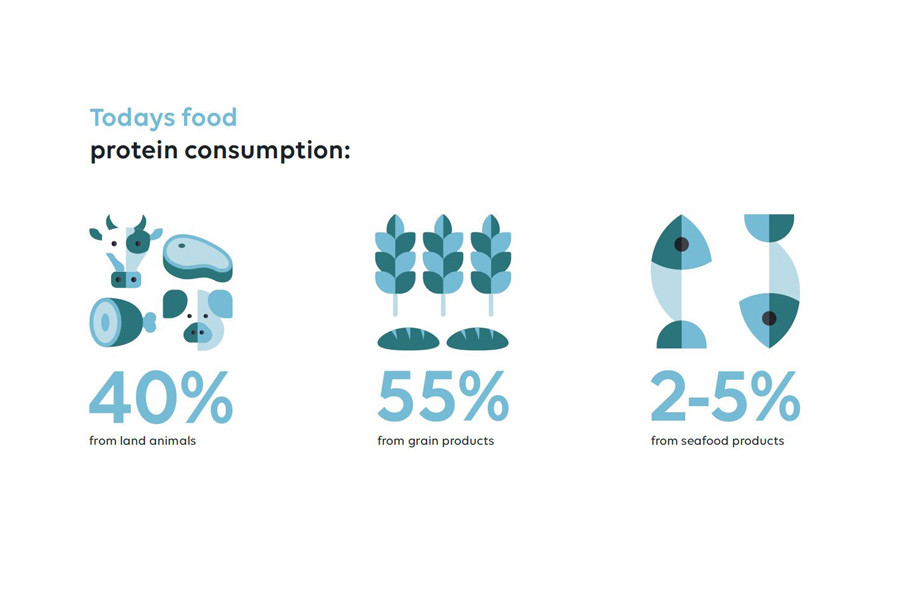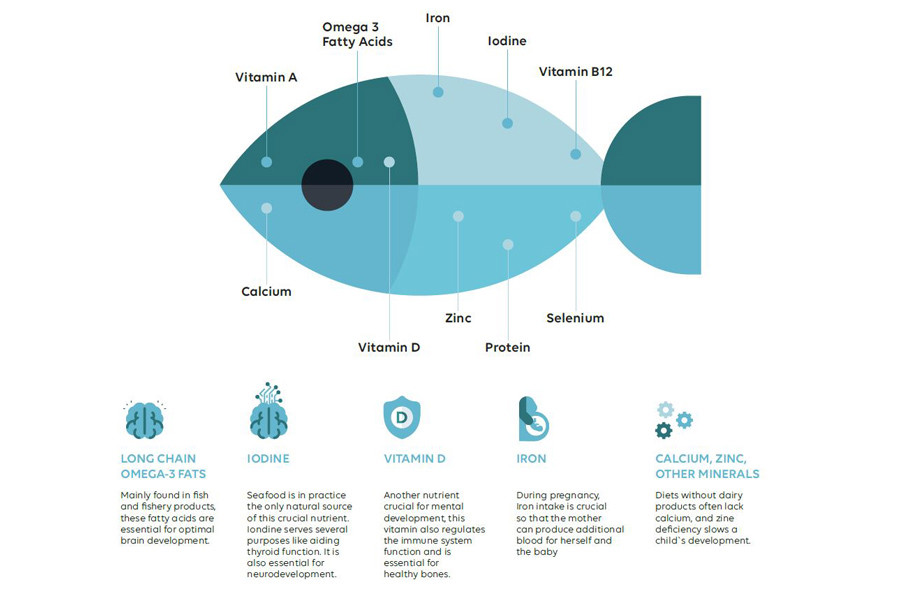The UN Food and Agriculture Organization (FAO) has estimated that the world's population will increase to approx. 9 billion people by the year 2050.
A population growth of approx. 30% will require increased food production of approx. 30%,based on current food production volumes. The FAO has estimated that the increased demand for seafood will be in total 40 million tons by 2030.
Today, less than 5% of the protein consumed worldwide originates from the sea. There is no doubt that we will need some source of protein in the future, making the potential for increased production of food from the sea particularly relevant.
Seafood is highly sustainable in a climate perspective for several reasons:

In 1999, 60% of all deaths and 43% of all illnesses were related to overweight, diabetes and osteoporosis. In 2025, these figures are expected to be 73% and 60% respectively.
Unhealthy diet can cause various types of illness. The lifestyle diseases now emerging in large parts of the world can be prevented by ensuring a correct diet. All dietary experts recommend that we eat more seafood and less red meat. We are in a unique position to contribute in this area. We therefore take an active role with our partners to encourage people to eat seafood, and to increase knowledge of, and access to, seafood in different arenas.
Recent consumer surveys have indicated a reduction in the consumption of seafood among children and young people. This can be a serious problem in the years to come if we cannot change this trend. An increased intake of seafood will help people improve their diets and will reduce the incidence of lifestyle diseases.

SEAFOOD IS GOOD FOR YOU!
Oily fish has a high Omega-3 content and a low Omega-6 content. We tend to focus on Omega-3 in our diets and forget Omega-6.
The World Health Organization (WHO) is concerned about the high consumption of Omega-6 in our diets, and recommends that we all reduce the amount of Omega-6 we eat. Seafood often has a high content of Vitamins A, E and D and is rich in the minerals zinc and iodine. Cod is a particularly good source of iodine.
Health authorities recommend that we eat more fish and reduce our consumption of red meat. Increased consumption of seafood has the potential to improve public health. It has been documented that salmon has a positive effect on preventing cardiovascular diseases, and several trails have shown a positive impact on preventing other diseases such as dementia, diabetes, depression etc.
Within the Group, there is a high focus on health – the health of our employees and of both current and future consumers. The individual human being, the consumer, is important both for the community and for us in the Group, as these are the people who will buy our products and therefore secure our jobs.
Surveillance of undesirable substances and fatty acid profile
As a result of the feed strategy in the Group and by using alternative resources in feed, we have reduced the level of undesirable substances such as dioxin and DL-PCBs in the salmon by 38% per cent from 2011 (0.736 pg/g) to 2019 (0.445 pg/g).
In the same period, we have managed to stabilize the level of EPA/DHA from 2011 (1.21 g/100g) to 2019 (1.17 g/100g).
Salt
In 2016 the Group made an agreement with Norwegian health authorities. The agreement obliges the parties to work towards reduction of salt.
Main Goal: Salt intake in Norway will be reduced by 15% by 2018, 20% by 2021 and 30% by 2025.

The salt partnership - "Saltpartnerskapet"
The goal of the salt partnership is to stimulate the food and catering industry to reduce the content of salt in foods and food served, as well as to increase awareness of salt and health in the population. Furthermore, dissemination of knowledge and competence, research, information to consumers and monitoring of the efforts are key tasks.
Key facts and figures
More than 3.1 billion people depend on fish for at least 20% of their total animal protein intake, and a further 1.3 billion people for 15% of animal protein intake.
Often undervalued and discarded parts of the fish, like the head, viscera and back-bone, make up 30-70% and are especially high in micronutrients.
Fish consumption has increased from 9 kg per capita in 1961 to over 20 kg per capita today.
